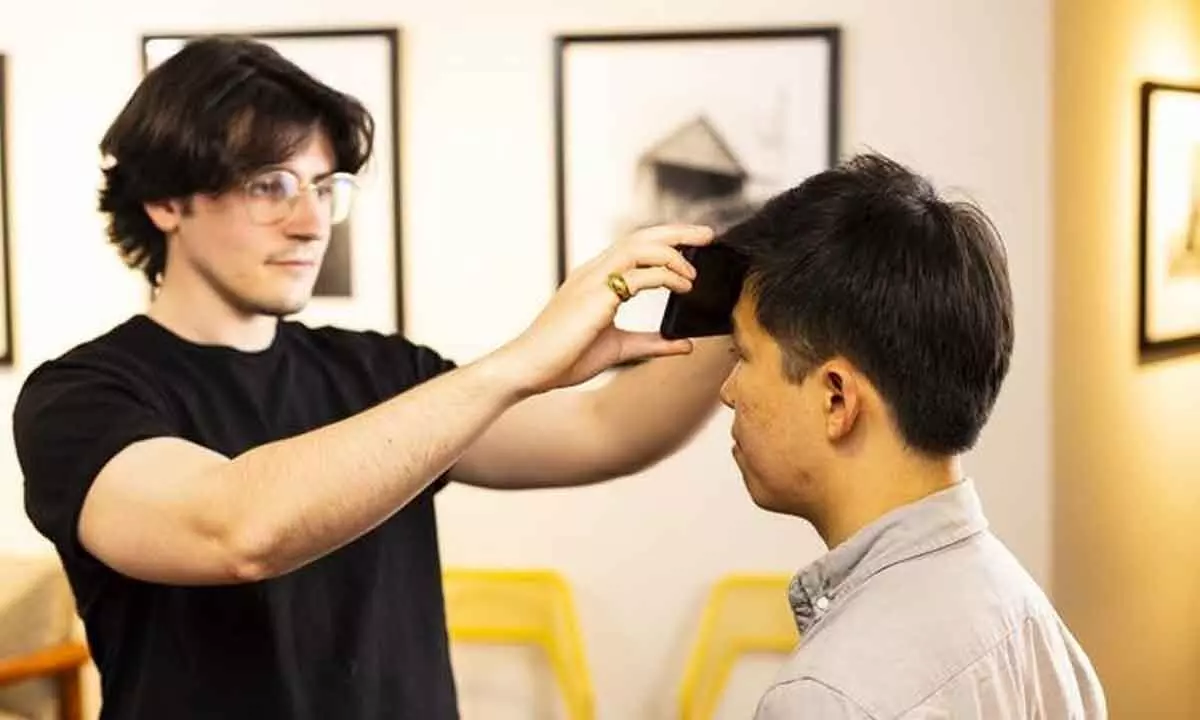Live
- BJP leader Krishna Sagar Rao condoles death of former PM Manmohan Singh
- Sirivella: Engg student dies in accident
- Revanth deeply condoles Manmohan Singh’s death
- With eye on local body polls, TPCC gears up to rejig body
- Never share OTPs with strangers: DIG Koya Praveen
- Amid Mizzle, Citizens lap up chilly weather
- 5-day FDP held at KSRM Engg College
- Traffic cops debunk claims of discounts on e-Challans
- Elaborate security arrangements made for Vaikunta Ekadasi: SP Subba Rayudu
- Cong flays TTD move to remove non-Hindu staff
Just In
This smartphone works as a thermometer that accurately detect fevers

Scientists including an Indian-origin professor have turned a smartphone into a thermometer that uses the phone's touchscreen and repurposes the existing battery temperature sensors to gather data that a machine learning model uses to estimate people's core body temperatures.
Scientists including an Indian-origin professor have turned a smartphone into a thermometer that uses the phone's touchscreen and repurposes the existing battery temperature sensors to gather data that a machine learning model uses to estimate people's core body temperatures.
The team led by researchers at the University of Washington (UW) created an app called FeverPhone, which transforms smartphones into thermometers without adding new hardware.
Shwetak Patel, a UW professor in the Allen School and the electrical and computer engineering department, was a senior author on the paper.
When the researchers tested FeverPhone on 37 patients in an emergency department, the app estimated core body temperatures with accuracy comparable to some consumer thermometers.
The app is the first to use existing phone sensors and screens to estimate whether people have fevers.
It needs more training data to be widely used but for doctors, the potential of such technology is exciting, according to the study published in the journal Proceedings of the ACM on Interactive, Mobile, Wearable and Ubiquitous Technologies.
"In a wave of influenza, for instance, people running to the ER can take five days, or even a week sometimes. So if people were to share fever results with public health agencies through the app, similar to how we signed up for Covid exposure warnings, this earlier sign could help us intervene much sooner," said Dr Mastafa Springston, co-author on the study.
The researchers used the data from different test cases to train a machine learning model that used the complex interactions to estimate body temperature.
Since the sensors are supposed to gauge the phone's battery heat, the app tracks how quickly the phone heats up and then uses the touchscreen data to account for how much of that comes from a person touching it.
As they added more test cases, the researchers were able to calibrate the model to account for the variations in things such as phone accessories. Then the team was ready to test the app on people.
To use FeverPhone, the participants held the phones like point-and-shoot cameras -- with forefingers and thumbs touching the corner edges to reduce heat from the hands being sensed (some had the researcher hold the phone for them).
Then participants pressed the touchscreen against their foreheads for about 90 seconds, which the researchers found to be the ideal time to sense body heat transferring to the phone.
Overall, FeverPhone estimated patient core body temperatures with an average error of about 0.23 degrees Celsius, which is in the clinically acceptable range.
"We started with smartphones since they're ubiquitous and easy to get data from," said lead author Joseph Breda.

© 2024 Hyderabad Media House Limited/The Hans India. All rights reserved. Powered by hocalwire.com






